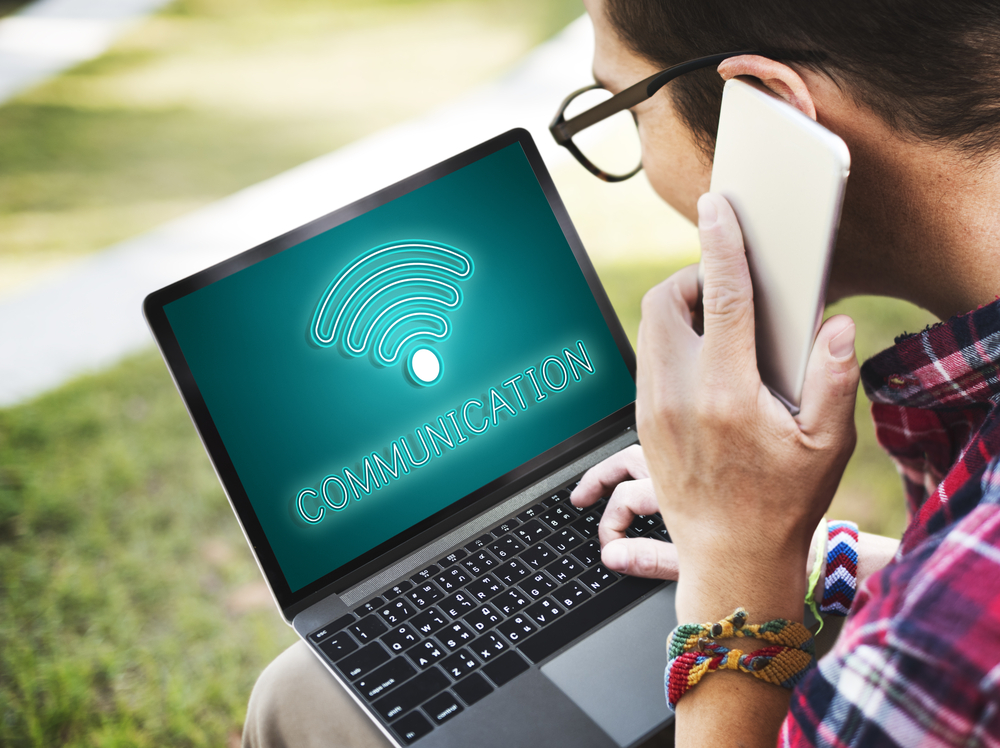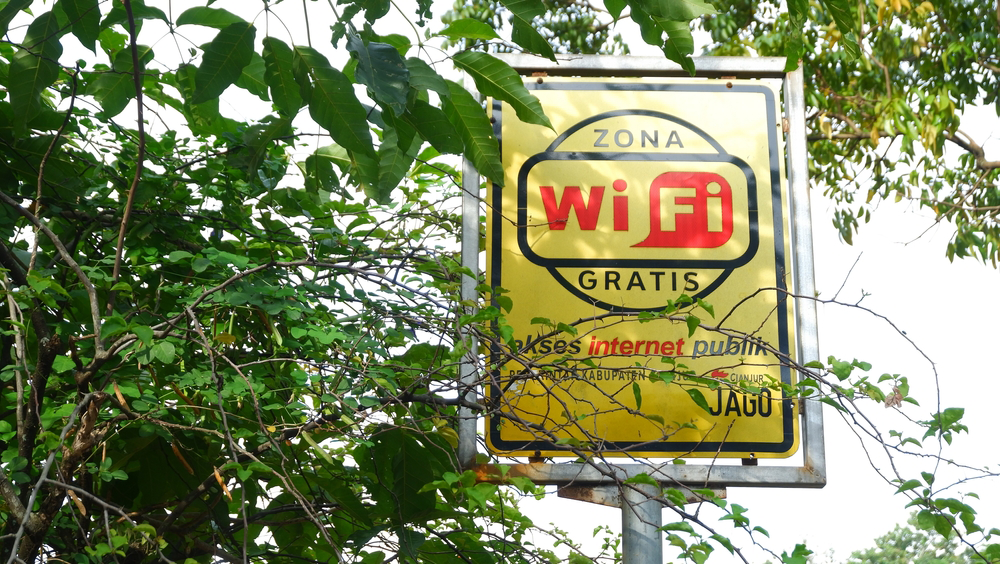Can You Really Trust “High-Speed Wi-Fi”?
You’ve seen it before: an Airbnb promising fiber internet, a café boasting superfast Wi-Fi, or a coworking space advertising 5G coverage. Then you show up, open your laptop, and watch your Google Doc buffer into oblivion.
For digital nomads, Wi-Fi isn’t a convenience. It’s the foundation that makes the lifestyle possible. Yet even the most seasoned travelers struggle to know what those signals and speed claims really mean.
The Illusion of ‘Fast Internet’
The problem starts with language. High-speed, fiber, ultra-fast — these terms sound objective but mean almost nothing without numbers.
A better way to think about it is through four metrics that actually matter:
| Metric | What It Means | What to Aim For |
|---|---|---|
| Download speed | How fast you receive data | 50 Mbps+ |
| Upload speed | How fast you send data (vital for calls) | 10 Mbps+ |
| Latency (ping) | The delay between sending and receiving | Under 50 ms |
| Stability | How often your connection drops | The most important one |
A place can have blazing download speeds but still feel sluggish if the upload is low or the connection flickers every few seconds. That’s why “5 bars” of Wi-Fi on your screen doesn’t mean your meeting won’t freeze mid-sentence.
The door are now open for the next 100 people! Polished mobile version, triple the destinations, cross-border insurance and more. Join the next 100 people FREE.
Why 5G Doesn’t Mean Fast
Many nomads confuse Wi-Fi strength with mobile data quality — and that’s where things get fuzzy.
4G and 5G aren’t Wi-Fi standards. They’re cellular network types. When you connect to “5G Wi-Fi,” you’re actually connecting to a router that’s using a 5G mobile signal in the background. You might have strong Wi-Fi locally, but the router could be feeding off a weak mobile network.
And while 5G is marketed as the next big thing, real-world performance varies wildly:
-
In major cities, 5G can deliver fiber-like speeds.
-
In smaller towns, it often falls back to 4G — or slower — without warning.
-
Coverage depends on towers, congestion, even rain.
In short, the label doesn’t guarantee the experience.
“Forget the alphabet soup — 4G, 5G, LTE, fiber. What matters is whether your connection can hold a video call without glitching. The rest is just signal swagger.”
Why It’s So Hard to Predict Connection Quality
Digital nomads love predictability. But internet quality doesn’t play by those rules.
-
Infrastructure varies — “Fiber” in one country might mean something very different in another.
-
Local wiring — Even a high-end router can’t save you from bad internal cabling.
-
Power cuts and weather — In tropical regions, storms can knock out networks for hours.
-
Shared bandwidth — A full hostel of Zoom calls can turn even a great connection into a crawl.
Even two cafés on the same street can deliver wildly different speeds. That’s why many nomads keep a backup SIM, a hotspot, or an eSIM ready at all times.
How to Check Before You Commit
You can’t fix bad infrastructure, but you can avoid walking into it blind. Here’s how:
- Ask for proof, not promises.
Ask your host or coworking space for a screenshot of a recent speed test. - Test it yourself.
Use sites like Speedtest.net, Fast.com, or Cloudflare Speed Test. - Check upload, not just download.
If it’s under 5 Mbps, your calls may struggle. - Bring a backup.
eSIMs and travel routers (like Solis or GlocalMe) can keep you online when Wi-Fi drops. - Record your own data.
Tools like WiFiMan or OpenSignal can map where signal actually holds up — and where it doesn’t.
The Geography of Connection
Internet quality follows infrastructure, not hype.
-
Europe: Consistent speeds, but coworking can be pricey.
-
Southeast Asia: Improving rapidly, but outages still happen.
-
Latin America: Great in capitals, unpredictable in beach towns.
-
Africa: Growing 4G networks, variable performance.
Local community groups often know the real story better than any speed test site. (That’s part of why Nomados includes firsthand connection reports from real travelers.)
Toward Wi-Fi Literacy
If there’s a quiet skill every nomad eventually learns, it’s Wi-Fi literacy. Understanding that 100 Mbps isn’t a promise. Knowing how to check a router. Recognizing that stability beats speed every time.
Wi-Fi literacy is about taking control instead of trusting the marketing. It’s the difference between hoping for connection and building your own.
The Geography of Connection
Internet quality follows infrastructure, not hype.
-
Europe: Consistent speeds, but coworking can be pricey.
-
Southeast Asia: Improving rapidly, but outages still happen.
-
Latin America: Great in capitals, unpredictable in beach towns.
-
Africa: Growing 4G networks, variable performance.
Local community groups often know the real story better than any speed test site. (That’s part of why Nomados includes firsthand connection reports from real travelers.)
Toward Wi-Fi Literacy
If there’s a quiet skill every nomad eventually learns, it’s Wi-Fi literacy. Understanding that 100 Mbps isn’t a promise. Knowing how to check a router. Recognizing that stability beats speed every time.
Wi-Fi literacy is about taking control instead of trusting the marketing. It’s the difference between hoping for connection and building your own.
Wi-Fi isn’t oxygen — it’s gravity. It keeps your work, your relationships, and your life from floating away.
The next time you see “superfast 5G fiber internet,” don’t take the signal bars at face value.
Ask the right questions. Test the connection. And when you find a café that actually delivers, guard it like gold.
FAQs about Internet Speed and Wi-Fi for Digital Nomads
How can I test Wi-Fi before booking accommodation?
Ask for a screenshot from Speedtest.net and check both download and upload speeds. Under 10 Mbps upload may cause problems on video calls.
What’s a good internet speed for remote work?
At least 50 Mbps download and 10 Mbps upload with stable ping under 50 ms.
Are portable hotspots worth it for digital nomads?
Yes. They’re invaluable backups when Wi-Fi fails, especially in regions with unreliable infrastructure.
Which countries have the best internet for remote work?
Portugal, Estonia, South Korea, and Singapore consistently rank high for both speed and stability.
Connect with fellow location-independent professionals by joining our exclusive Nomados Digital Nomad Community for ongoing support, insider tips, and updates to enhance your borderless lifestyle.
Disclosure: Portions of this article were created with the assistance of AI tools and reviewed by the Nomados editorial team for accuracy and clarity.




